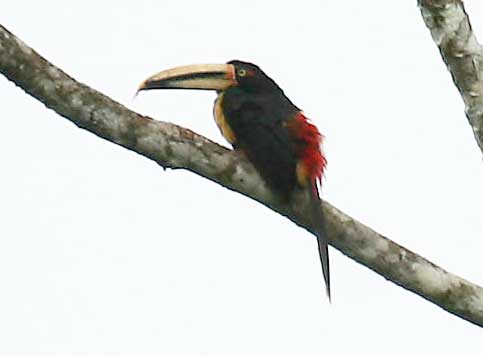Pteroglossus erythropygius (*) Cladus: Eukaryota Name Pteroglossus erythropygius Gould, 1843 Reference Proceedings of the Zoological Society of London Pt11 no.121 p.15 Vernacular names
The Pale-mandibled Aracari (Pteroglossus erythropygius) is a species of bird in the Ramphastidae family. It is found in Ecuador and Peru. References * BirdLife International 2004. Pteroglossus erythropygius. 2006 IUCN Red List of Threatened Species. Downloaded on 27 July 2007. Source: Wikipedia, Wikispecies: All text is available under the terms of the GNU Free Documentation License |
|

